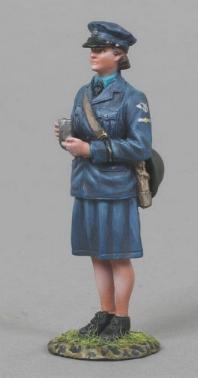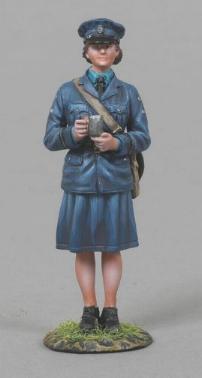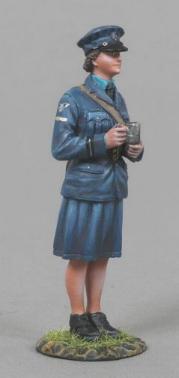WWII RAF: Yvonne Cormeau
Description
Yvonne Cormeau was born in 1909 to a Belgian consular official and Scottish mother. She was educated in both Belgium and Scotland was living in London when in 1937 she married Charles Emile Cormeau, a chartered accountant. Her husband enlisted in the army and in 1940 he was wounded in France and was sent back to the UK. Shortly afterwards he was killed when their London home was bombed. Her life was saved by a bathtub which fell over her head and protected her, although killing her unborn baby. She sent her other two-year-old daughter Yvette to the countryside to escape the frequent bombing of London.
Newly widowed, Cormeau decided to “take her husband’s place in the Armed Forces” and she joined the WAAF as an administrator in November 1941, while serving at RAF Swinderby she answered an appeal on the noticeboard for linguists, and was recruited by SOE and began training as an F Section wireless operator on 15 February 1943. She was commissioned and promoted to the rank of Flight Officer.
She did her SOE training with Yolande Beekman Noor Inayat Khan. She was the only one of the three to survive her mission to France.
On the night of 22 August 1943 Cormeau was parachuted into Nazi occupied France.
Her assignment was to work as the wireless operator on the SOE F Section Wheelwright circuit in Gascony. The leader of the circuit (or network) was George Starr, code name Hilaire, whom she had known before the war when living in Brussels, her code name was Annette. She declined to take with her the cyanide pill offered by SOE to agents so they could commit suicide if captured. She arrived armed with a .22 revolver, but on Starr’s advice, she never carried it with her during her thirteen months in France. To be captured by the Germans while carrying a firearm or a cyanide pill was, he told her a death sentence.
Cormeau was a talented signaler and could transmit up to 22 words per minute whilst the average was 12 words per minute.
She was almost arrested by the Germans after being betrayed by an agent codenamed Rodolph. However, she continued to operate, despite being confronted by “wanted” posters in her neighborhood which gave an accurate sketch of her appearance. She was stopped at a German roadblock with George Starr; the pair was questioned while a gun was held to their backs. Eventually the Germans accepted her story and the false identification papers and she succeeded in passing her wireless equipment off as an X-ray machine.
Cormeau sent over 400 messages to London, second only to Auguste Floiras of the Jockey network who operated for a longer period of time. She made arrangements for arms and supplies to be dropped for the local Maquis. She assisted in the cutting of the power and telephone lines, resulting in the isolation of the Wehrmacht Group G garrison near Toulouse.
In June 1944, Cormeau was shot in the leg while escaping from a German attack on Castelnau, but managed to escape with her wireless. The dress she wore on this occasion and the bloodstained briefcase she carried are on permanent display in the Imperial War Museum in London along with her WAAF officer’s uniform. On 21 August, Toulouse fell to the French Forces of the Interior, the umbrella organisation of resistance fighters. Starr and Yvonne Cormeau drove into the city, American and British flags on their car.
The liberation of southwestern France was complete and her war was over.
Cormeau is acknowledged to be the inspiration behind the book and film ‘Charlotte Gray’.
This figure of Cormeau in happier times chatting with Beekman prior to their mission is limited to 100 pieces.
Model: TG-RAF007B
C$74.00
3 in stock




